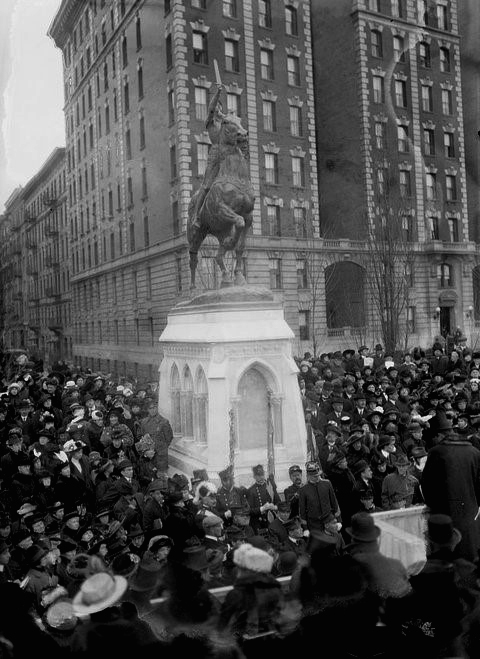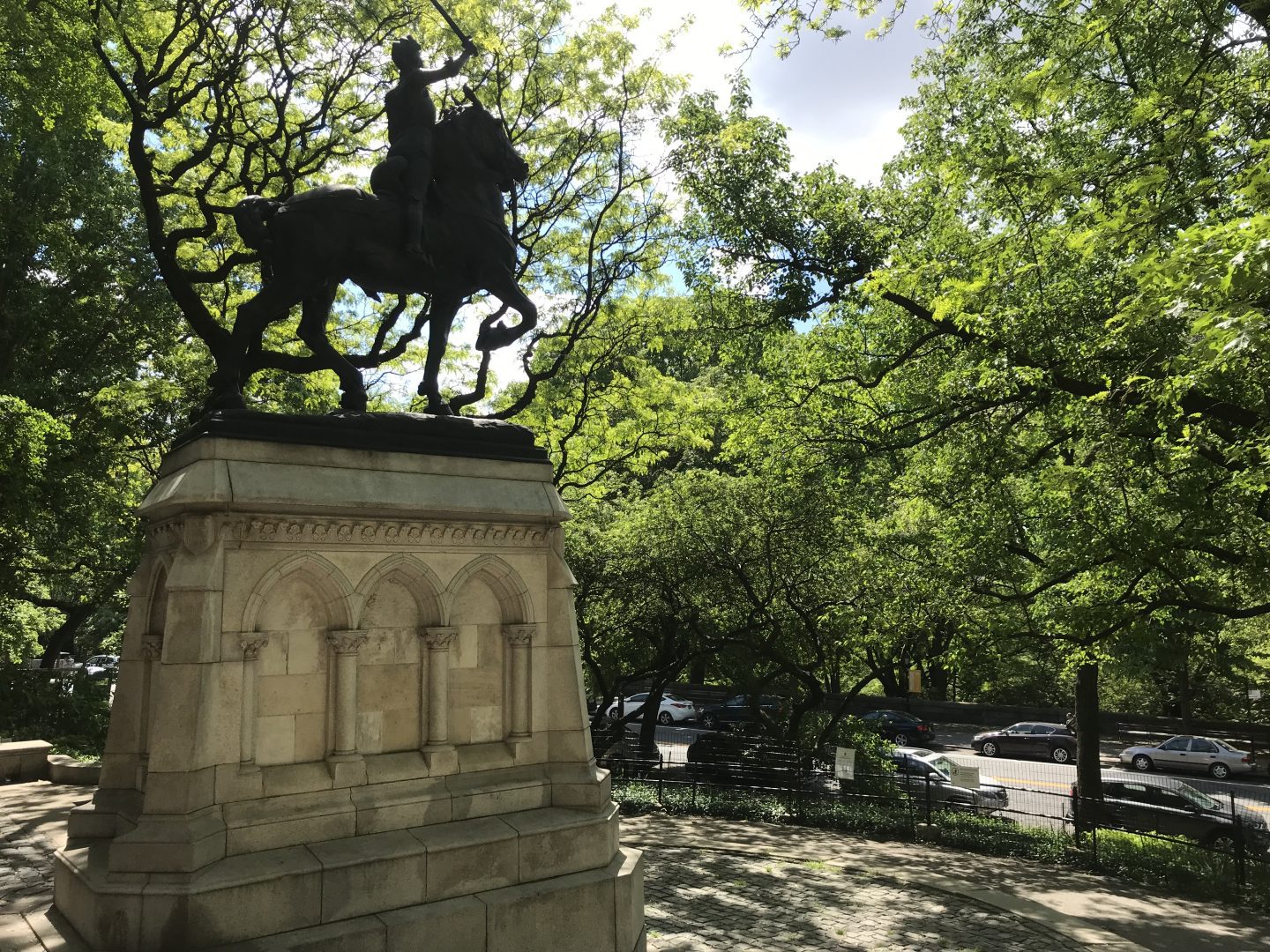Donate to the Joan of Arc Statue Committee
The Joan of Arc Statue Committee is a volunteer Park User Group working in cooperation with Riverside Park Conservancy.
The mission of the Committee is to help the Conservancy care for the upkeep and beautification of the Joan of Arc Memorial and the surrounding area of parkland known as Joan of Arc Island.
With support from the Conservancy, the Committee tends to the Island’s landscape, and also actively fundraises for repairs and maintenance for the statue, the plaza, and the pathways.
Thanks to the fundraising efforts of the Committee, in recent years the plaza surrounding the statue was restored, a pathway was repaved, new stairs were installed, and a new entrance was created. Additionally, a section of fencing, extending along the north path from the Statue was completed, and a new wicket fence was installed around one of the gardens.
Connect with the Committee on:
Facebook: Joan of Arc Island, Riverside Park
Instagram: @RiversideJoan
Sign Up for Joan of Arc Committee Updates!

Joan of Arc Memorial
Joan of Arc (Jeanne d’Arc in French) was born on January 6, 1412 to peasant parents in Domrémy, France. At age 13, Joan reputedly began to hear the voices of the early Christian martyrs St. Michael, St. Catherine and St. Margaret. When Joan was 16, the voices of the saints urged her to assist the French royal family in their Hundred Years’ War against the English. Joan convinced the French heir, Charles, that she was on a divine mission, and she was given an army to command. Dressed in armor and carrying an ancient sword dug from a chapel, Joan led her army to several victories over the English. Afterwards, when Charles was crowned King Charles VII at the cathedral of Rheims, she stood in the place of honor. Securely on the throne, Charles sought peace with the English, who still controlled much French land. Without Charles’ support, Joan led an unsuccessful attack near Paris. She was captured and sold to the English, who turned her over to a religious court in the English-ruled town of Rouen. She was tried for heresy for wearing a man’s armor and for believing she was solely accountable to God and not to the Church. She was also tried for witchcraft for claiming to hear voices and see visions. Charles VII made no attempt to save her. Joan was ordered to recant her declarations of being sent by God, or she would be turned over to be tried and executed by a secular court. After many weeks, Joan finally signed a written retraction. She was then taken back to prison and forced to wear men’s clothes. A panel of judges unanimously convicted her of relapsing into heresy and sentenced her to death by fire. She was 19 years old. Twenty-four years after her execution, the church re-opened her trial, exposed the illegalities of the first trial and exonerated her of all accusations. She was canonized by Pope Benedict XV in 1920.
Located at 93rd Street and Riverside Drive, the over life-size bronze statue of Joan of Arc features her in armor, holding aloft her sword and standing in the saddle of her warhorse. The sculptor, Anna Hyatt Huntington, wanted to depict Joan as spiritual rather than warlike.
Much like Joan, Anna Hyatt Huntington was a remarkable, trailblazing woman. She had a prominent career as a sculptor at a time when few women achieved success in the art world.
Hyatt Huntington was attempting to represent an incident that occurred after Joan found the sacred sword where “She is holding it [the sword] up to her God and praying for guidance.” Architect John Van Pelt designed the granite pedestal upon which the statue rests in the Gothic style. He incorporated stones from Rheims Cathedral and stones from the dungeon at the Tower of Rouen into the blind arches of the pedestal so that it is a literal witness to both Joan’s moments of triumph and disaster.
The statue in Riverside Park was actually modeled after a life-size plaster equestrian statue designed by Hyatt and exhibited at the Paris Salon in 1910. Around the same time, an American committee was planning a monument to commemorate the 500th anniversary of the birth of Joan of Arc. Hyatt’s design caught the eye of Americans who attended the exhibit at the Paris Salon. In 1914, the commission was awarded to Ms. Hyatt. In 1915, in the midst of World War I, French Ambassador Jean Jusserand came to Riverside Park for the dedication of this monument and presented Anna Hyatt with the Légion d’Honneur for creating a monument to France’s national heroine. Hyatt’s was the first New York City park monument dedicated to a nonfictional woman.

In the spring of 1987, the “Adopt-A-Monument” Program, a joint partnership between the Municipal Art Society, the Department of Parks and Recreation, and the Art Commission of the City of New York, appealed to the business community to save 20 endangered monuments throughout the City. The Grand Marnier Foundation chose to clean and restore the Joan of Arc Statue with a $34,500 grant. Developers of 222 Riverside Drive donated funds to help revitalize the area in the form of erosion control, regrading, seeding, new plants, trees, pathways, and fencing.
Today, the Riverside Drive island (92nd – 95th Street) where the Joan of Arc Monument resides is maintained by a dedicated group of Riverside Park Conservancy’s Grassroots Volunteers, the Joan of Arc Statue Committee.

